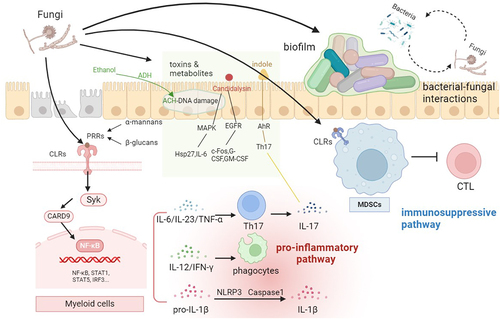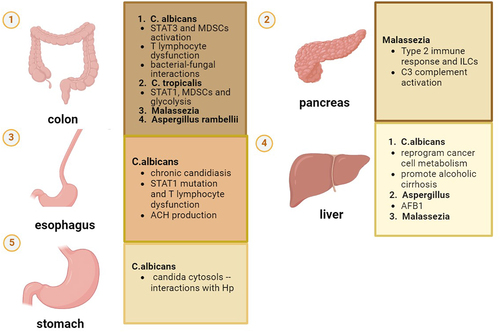Figures & data
Figure 1. The common mechanisms of fungi that are involved in triggering pathogenesis, especially in oncogenesis. PRRs, pattern recognition receptors; CLRs, C-type lectin receptors; CARD9, Caspase Recruitment Domain-containing protein9; STAT1, signal transducer and activator of transcription 1; Th17, T helper 17 cell; IL-6, interleukin 6; IL-23, interleukin 23; TNF-α, tumor necrosis factor α; IL-12, interleukin 12; IFN-γ, interferon γ; IL-1β, interleukin 1β; MDSCs, myeloid-derived suppressor cells; TCL, cytotoxic T cell; ACH, acetaldehyde; MAPK, mitogen-activated protein kinases; EGFR, epithelial growth factor receptor; AhR, aryl hydrocarbon receptor; Hsp27, heat shock protein 27; G-CSF, granulocyte colony-stimulating factor; GM-CSF, granulocyte-macrophage colony-stimulating factor.

Data availability statement
Data sharing is not applicable to this article as no new data were created or analyzed in this study.

